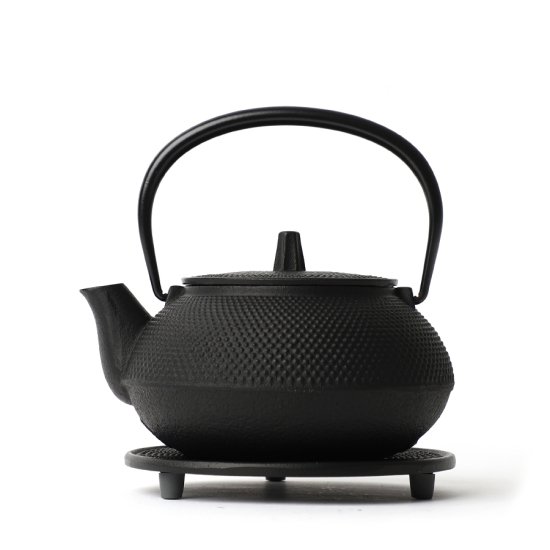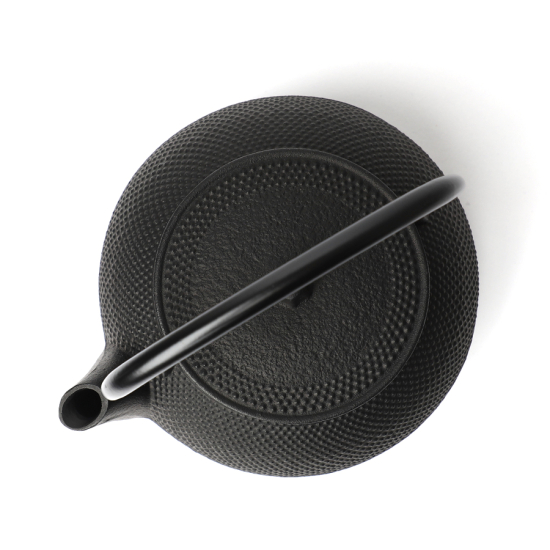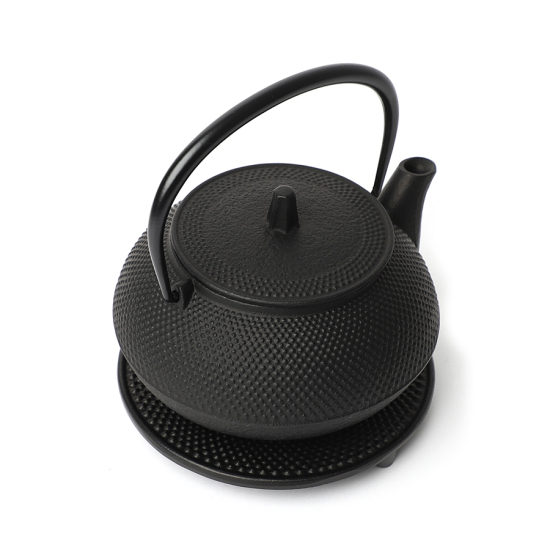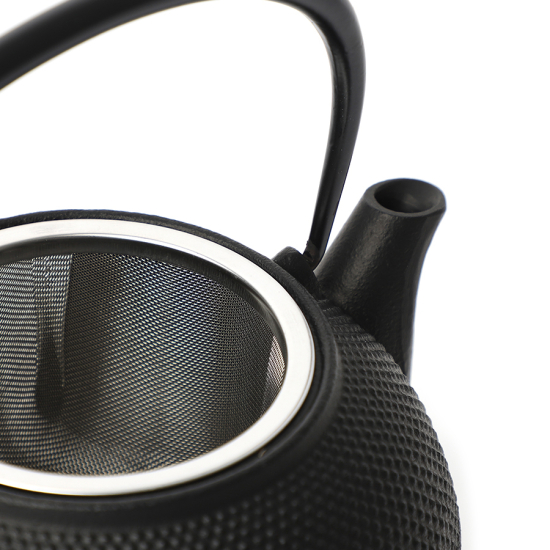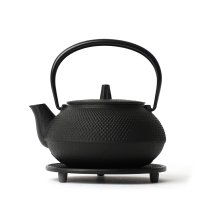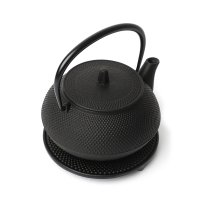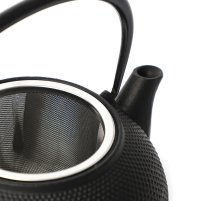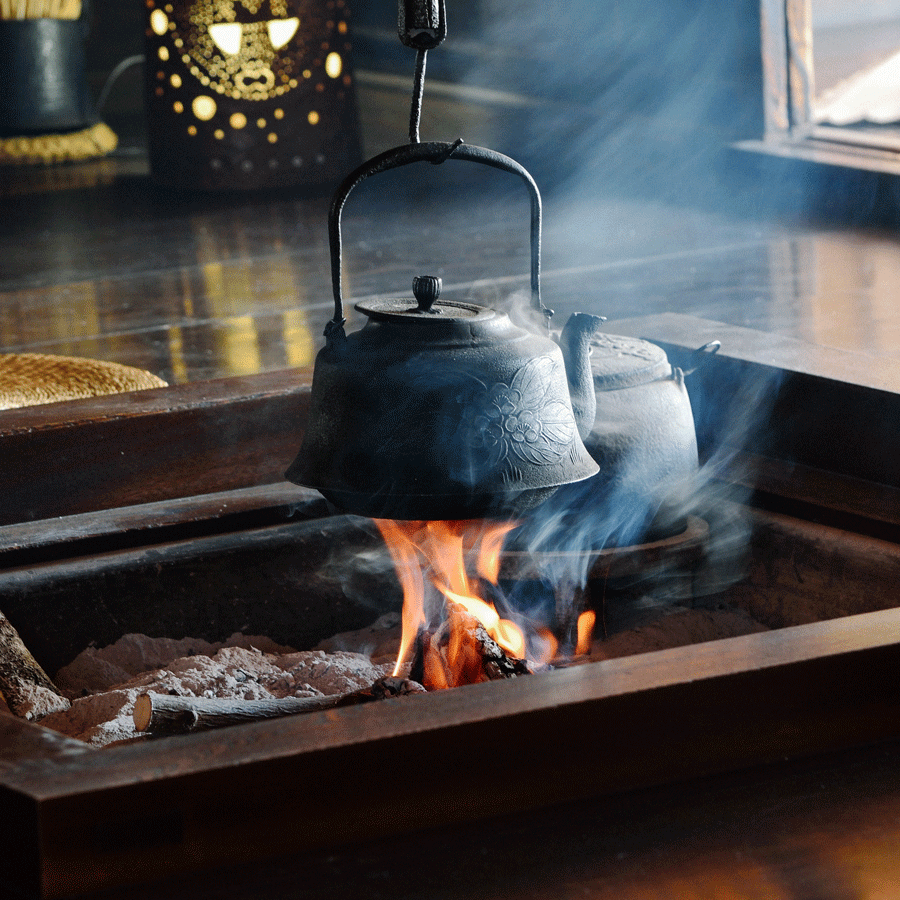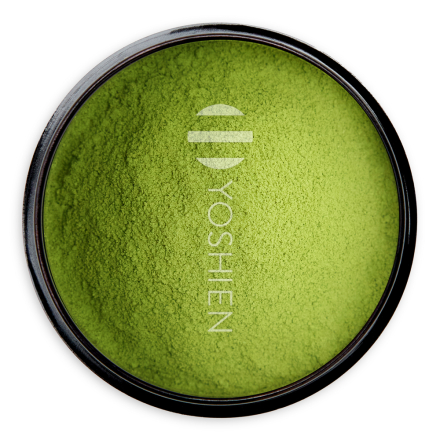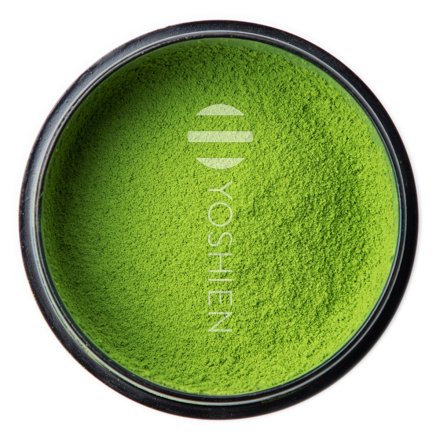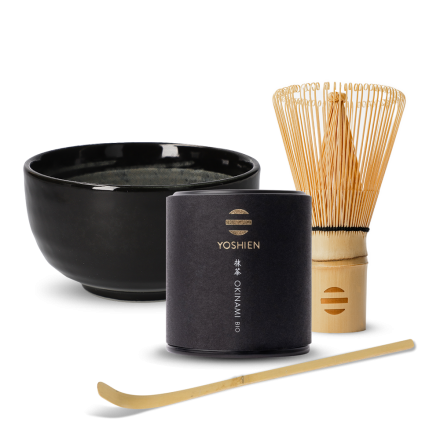The name Iwachu is synonymous with cast iron goods of the highest quality, and the brand's versatile product range extends from classic cast iron kettles (tetsubin), teapots (tetsu kyusu) and related accessories to bells, pans and much more. The manufacturer has boasted its own tradition since its founding in the Meiji period and throughout the 400-year-old Nanbu tekki tradition. It also has its own production line. Every step, from design planning to manufacturing to sales, is carried out by the company itself. Iwachu is dedicated to producing robust cast iron products with excellent functionality and contemporary design. Master casters at the company are required to undergo a minimum of 15 years of training, meaning that all products meet the highest quality standards.
Tetsubin Kyusu
Combo Set
IWACHU
SKU
1867
Original Tetsubin kyusu by Iwachu in Japan. Handmade masterpiece, combination model (teapot+tetsubin) made of Japanese cast iron for boiling water and tea, featuring a stainless steel strainer and a cast iron coaster. Black, no enamel, arare pattern, Nanbu shape. 650ml
| Type | Nanbu Tekki tetsubin kyusu and trivet |
| Origin | Morioka, Iwate, Japan |
| Studio/Artist | Iwachu |
| Maximum Capacity | 650ml |
| Dimensions | 16 x 14 x 14.5cm (teapot) |
| Weight | 1.5kg teapot; 0.4kg trivet |
| Material | Cast iron |
| Pattern | Arare pattern (霰; hail) |
| Coating | Iron-permeable silicone coating for rust protection (黒焼付仕上げ; kuro-yakitsuke technique) |
| Stove Use | Suitable for use on electric stovetops as well as over small to medium gas-powered flames |
| Strainer | Removable stainless steel strainer |
| Artist's Stamp | Iwachu stamp |
| Packaging | High-quality gift box from Iwachu |
In stock



